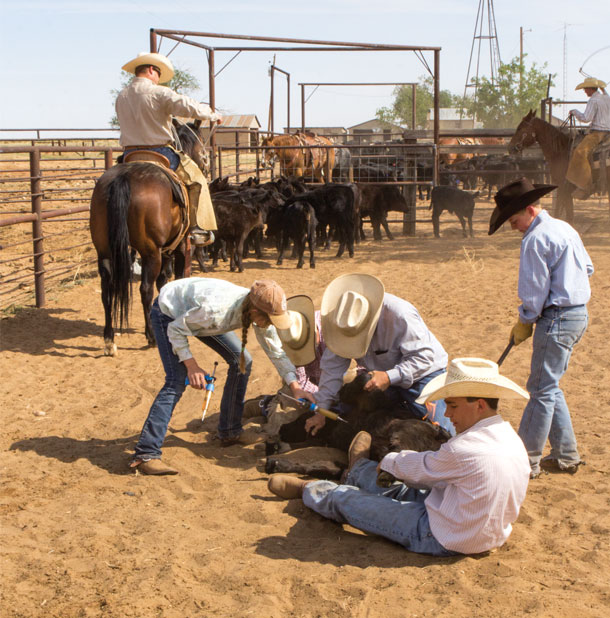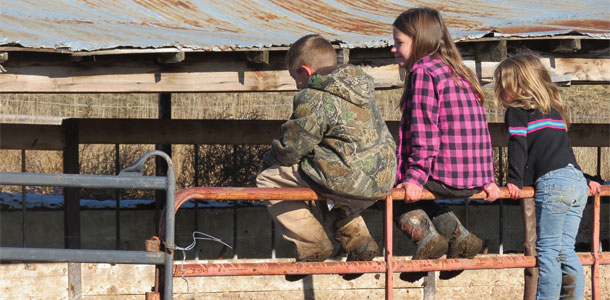According to the National Children’s Center for Rural and Agricultural Health and Safety, about 38 children are injured in an agriculture-related incident every day. And about every three days, a child dies from one of those incidents.
If you’re like most farmers and ranchers in this country, you have probably attended at least one of those funerals in your lifetime.
So, before you send your child, grandchild, niece, nephew or neighbor to tackle your “to do” list this summer, you may want to consider some safety advice from the professionals.
Overestimating your child’s ability
Shari Burgus, education director for the non-profit organization Farm Safety For Just Kids, says it is important to keep in mind that not all children are the same – mentally, physically and emotionally.
Determining when the child is ready for a specific task takes a lot of careful consideration and supervision. Just because a child is physically big doesn’t necessarily mean they are capable of doing the job safely, she says.
“Oftentimes, parents or grandparents will see one 10-year-old doing a job and think that their 12-year-old can do it too. That is not always the case for various reasons,” Burgus says. “As a parent you really have to do a lot of analyzing to make sure your kid is ready for certain tasks instead of comparing him or her to older siblings or kids in general.”
Burgus recommends first assigning the child a similar task but on a smaller scale. There are other things you can have the child do with machinery, with livestock or other ranch-related tasks that can gradually get them ready for the tougher jobs, she says.
The child needs to prove he or she can handle the situation, and then you can gradually increase the child’s responsibility and slowly decrease the amount of supervision.
It’s good to teach them to work, but do it safely

Because many beef operations are family businesses, youth play an integral role in the business’s success and provide a prime way to foster hard work and responsibility.
However, as an adult, it is important you don’t get caught up in your never-ending list of chores and forget to teach your child the correct and safe way to get the job done.
“As an organization, we believe it is OK for kids to work on the farm,” she says. “We also believe the work setting should be as safe as possible for working youth.
For example, if you are working in the yard, there is nothing wrong with kids picking up rocks or raking leaves and gradually working up to using the lawnmower. We want to keep the children on the farm. We want them to enjoy what they are doing, but we want them to become adults too.”
So how can you determine when your child is ready to load up the hay wagon? What age can they move the cows to the next paddock or drive the ATV to check the fence?
Lucky for you, the Marshfield Clinic Research Foundation has laid out some guidelines to help determine if your child is ready for the job. Here are a few:
Operating a tractor
- Has the child been trained to operate the tractor?
- Does the child have good peripheral vision?
- Is your child responsible? Do you trust your child to do what’s expected without anyone checking?
- Can the child understand and repeat from memory a 10-step process?
- Has an adult demonstrated driving a tractor on-site?
- Can the child react quickly?
- Can the child recognize a hazard and solve the problem without getting upset?
- Has the child shown he or she can do the job safely four or five times under close supervision?
- Is the child strong enough to fully operate the controls without using both feet or straining?
Working with cattle and horses
- Is the child comfortable around large animals?
- Has an adult demonstrated working with large animals on-site?
- Has the child been trained on animal behavior?
- If feeding the animals, does the feed weigh less than 10 to 15 percent of the child’s bodyweight? (Children should lift no more than 15 percent of their bodyweight.)
- Does the child know an escape route when working with cattle and horses?
Driving ATVs
- Can the child reach and operate all controls while comfortably seated?
- Is the child strong enough to operate the controls without straining?
- Does the child have an approved helmet with eye protection?
- Does the child do things that seem dangerous for the thrill of it?
Make safety a part of the procedure
The leading cause of youth fatalities in agriculture is machinery, followed by motor vehicles and drowning. It is easy to say, “I did it when I was a kid” or “That is the way Grandpa taught me.”
But you have to realize there is a lot more machinery and substantially bigger tractors today than there were 40 or 50 years ago, Burgus says.
As an adult, you have the responsibility to make sure the child is ready and equipped for the job. Ask yourself: Are all safety features in place? Are potential hazards removed from the work area?
Is the child wearing the appropriate clothing? Sadly, one of the biggest and most easily prevented reasons for injury or death is simply that the child wasn’t ready for the task, she says.
Sharry Nielsen, an extension educator for the University of Nebraska, recommends forming safe habits right from the beginning. For example, when teaching the child to drive an ATV, the first step you should teach them is to put on their helmet, she explains.
By encouraging and teaching them safe practices early on, safety can become a natural part of the procedure.
“It may mean taking more time, adding a step to the job, or doing some advanced planning, but it also may mean preventing an injury or fatality,” she says.
Nielsen also recommends supervising the child until he or she is comfortable and confident in the job. There isn’t a blanket approach to how much supervision or when to stop supervising, she says. It all depends on the age and maturity level of the child.
You set the example

Children learn a lot just by emulating your behavior, says Dennis Murphy, a farm safety specialist at Penn State University. However, if something unusual happens, like a bump in the road or a piece of machinery malfunctions, the child doesn’t know how to react to it because they haven’t been properly trained.
“It’s often a continuous cycle,” Murphy explains. “Parents and grandparents usually exhibit dangerous behavior because that is the way they were taught. That is why it is important that youth working on a farm or beef operation attend some type of formal training if at all possible.”
Murphy believes formal training, rather than simply job shadowing, is a great way to teach the child properly. He says oftentimes parents or grandparents use the excuse that there wasn’t enough time to train the child.
So sending the child to a formal training can be a huge time-saver and a way to get an outside opinion on different safety procedures.
Many universities offer outreach programs that teach youth the necessary safety precautions when operating equipment and machinery, working with livestock and more.
If a formal training program is not available in your state, it is important that you are cautious and really take the time to explain things to the child, he says.
Just remember we want to protect the kids that are growing up to be the next generation of agriculture. Granted, sometimes accidents happen. But let’s work toward preventing the accidents that can be avoided through safe practices. ![]()
Cassidy Woolsey is a freelance writer based in Utah.
PHOTO 1: Saddled up and ready to go check and move cattle. Photo courtesy of Mike Dixon.
PHOTO 2: Children helping with branding and vetting on the Ranch. Photo courtesy of Mike Dixon.
PHOTO 3: Adults should keep kids out of hazardous situations. Don’t use ranch-related chores or machinery as a baby sitter or activity center for young kids. Photo courtesy of Cassidy Woolsey.
Looking to hire youth?
For those of you who are looking to hire youth over the summer, Nielsen has laid out a few things for you to consider:
- Make sure the youth you are hiring are at least 14 years old if working with any of the jobs deemed hazardous by the U.S. Department of Labor.
- If they will be working with machinery, insist they take a basic tractor safety course as offered by agriculture education instructors and cooperative extension.
- Train them on your machines and in doing the jobs you do. Don’t expect them to know all about your farm or ranch, even if they grew up on a farm or ranch or have been working for someone else in the industry.
- Supervise until the youth is comfortable and confident in the jobs you expect him or her to do.








